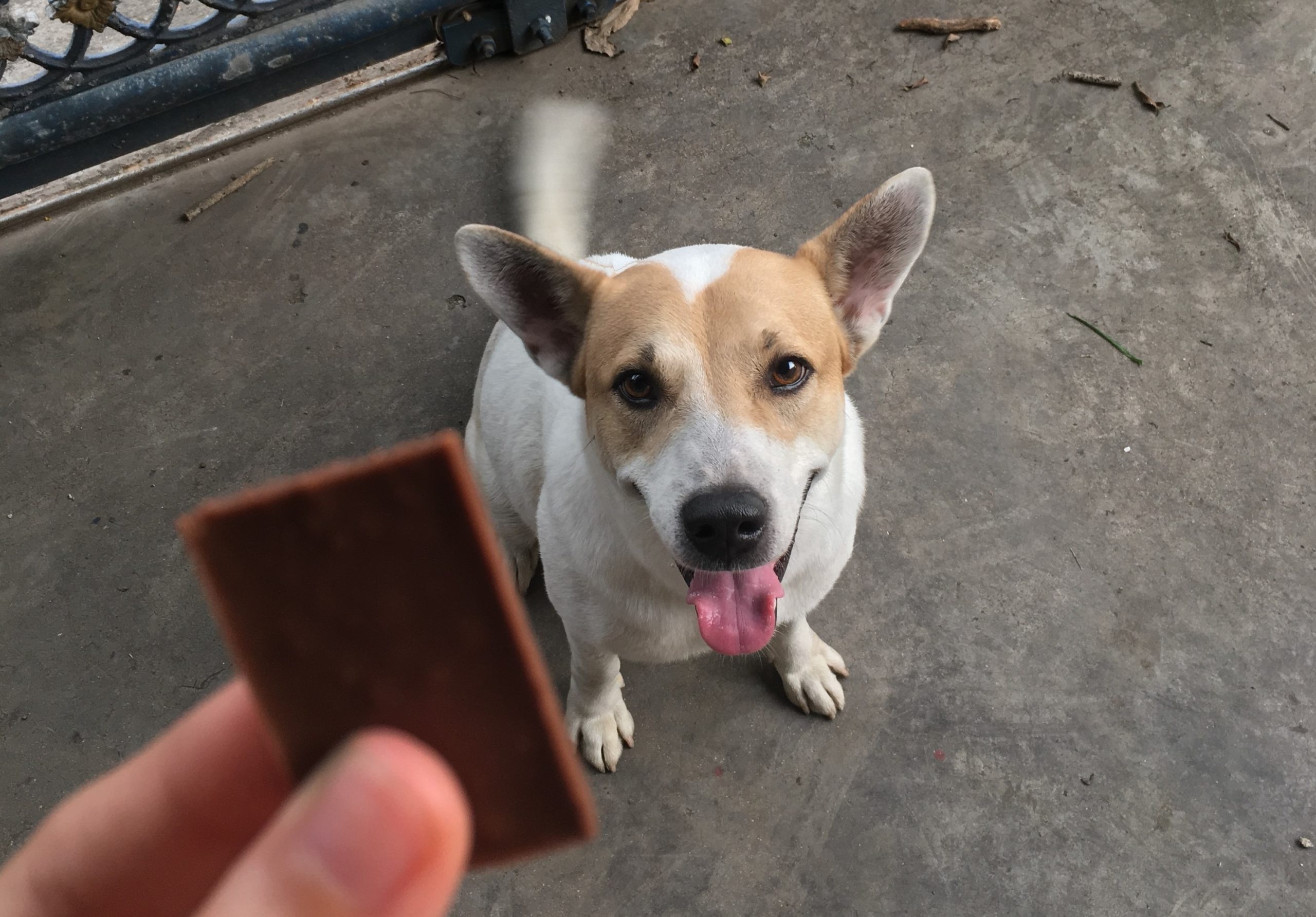Fatal Festivities! – Chocolate at Easter
Blog , +2
April 6, 2020

Written by: Zoe Russell, BSc (Hons)
Nutrition Officer, Skinner’s Pet Foods
As Easter draws nearer and nearer, the lure of a milk chocolate egg becomes all too tempting- even to our beloved pooches! However, chocolate and other treats can be extremely toxic for dogs and if eaten can cause severe health implications. Therefore, let’s try and keep them safe this Easter and leave the chocolate eating to the kids (and the adults!).
Why is chocolate toxic for dogs?
Chocolate poisoning is one of the most commonly identified toxicological problems in dogs. This is because chocolate is often readily available in a household, meaning dogs have easy access to this sweet treat- especially at Easter. What makes it so toxic, is that the seeds used to make chocolate contain substances called methylxanthines, including theobromine and caffeine, which act as nerve stimulants (1). In the dog’s body, these methylxanthines are processed very slowly, meaning they can be present for around 20 hours, stimulating the central nervous system and affecting the heart and kidneys. Signs of toxicity can begin with vomiting and diarrhea, moving into cardiac arrhythmias, internal bleeding, seizures and in extreme cases, death (2)(3).
In particular, theobromine in chocolate is a key concern as the concentration is over three times higher than that of caffeine. In fact, it is estimated that the onset of toxicity in dogs can occur from the consumption of as little as 20mg/kg of bodyweight of theobromine, while reactions such as seizures can occur after the consumption of approximately 60mg/kg (4). Higher doses than this may be lethal.
However not all cases end in mortality, as the severity of the reaction will depend on a number of factors such as the type of chocolate consumed. For example, dark chocolate contains a higher percentage of theobromine then white or milk chocolate and will therefore be more toxic in smaller quantities. In addition, the severity of the reaction will be dependent on how sensitive the dog’s digestive system is and whether the chocolate was eaten on an empty stomach (5).
Staying Safe:
Dogs are naturally scavengers and will therefore eat whatever they can get their paws on. So, keep your dog safe by storing your chocolate and other tasty treats in a high kitchen cupboard that they cannot access. In addition, politely remind other family members to keep any Easter treats shut away, and out of reach of hungry mouths!
However if you are worried your dog has eaten any quantity of chocolate, please seek veterinary assistance immediately.
References:
1. Reddy, B., Reddy, V.S. and Sivajothi, S. (2013). Chocolate Poisoning In A Dog. International Journal of Veterinary Health Science & Research, 01(03), pp.16–17.
2. Ahlawat, A., Ghodasara, S., Dongre, V. and Gajbhiye, P. (2014). Chocolate Toxicity in a Dog. 43(6), pp.452–453.
3. Ramakrishnan, V., Veeraselvam, M., Rajathi, S. and Sundaravinayaki, M. (2014). Study on Chocolate Poisoning in a Dog – A Case Report. Aayvagam an International Journal of Multidisciplinary Research, 2(1), pp.2321 – 5739.
4. Cortinovis, C. and Caloni, F. (2016). Household Food Items Toxic to Dogs and Cats. Frontiers in Veterinary Science, 3.
5. Kovalkovičová, N., Šutiaková, I., Pistl, J. and Šutiak, V. (2009). Some food toxic for pets. Interdisciplinary Toxicology, 2(3).


